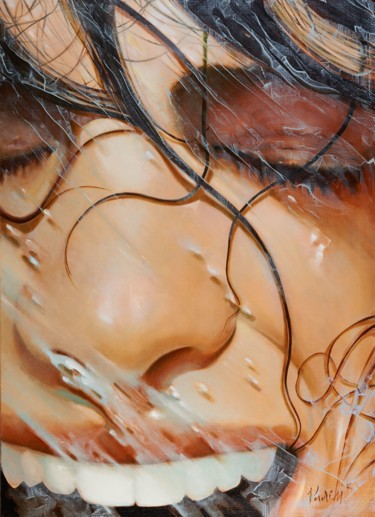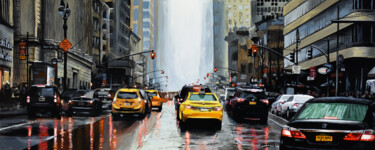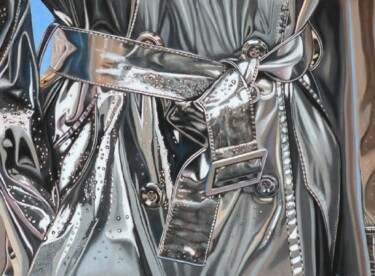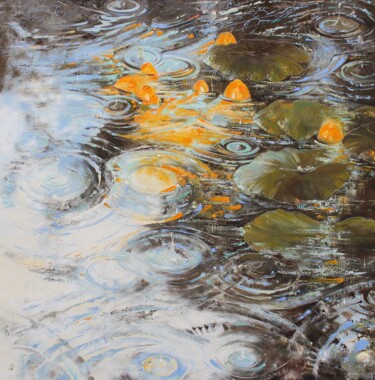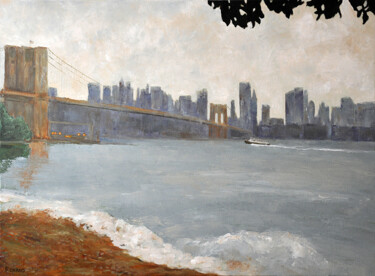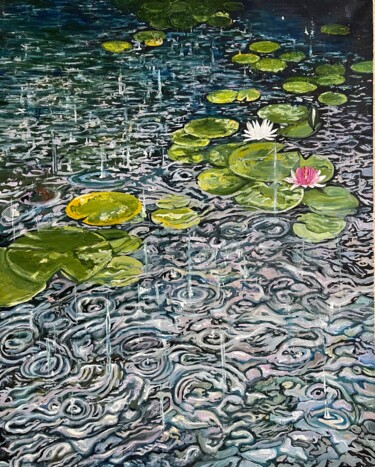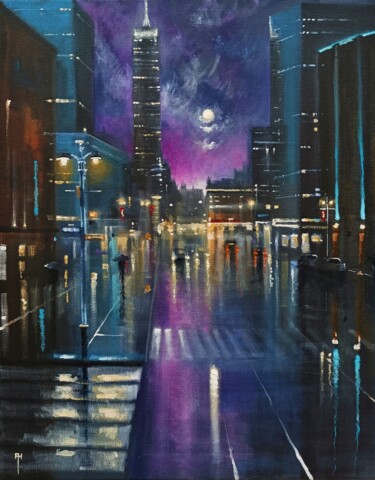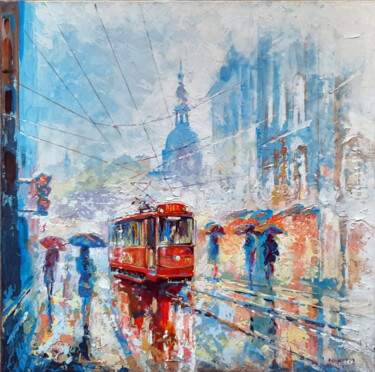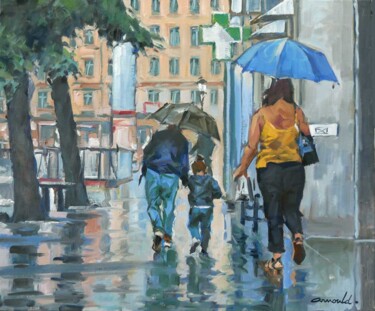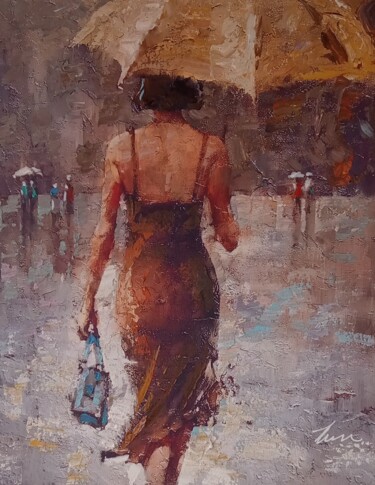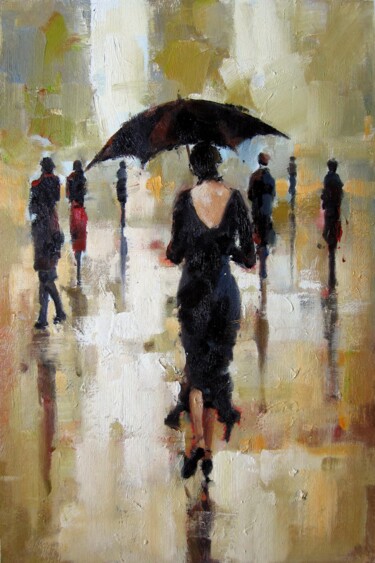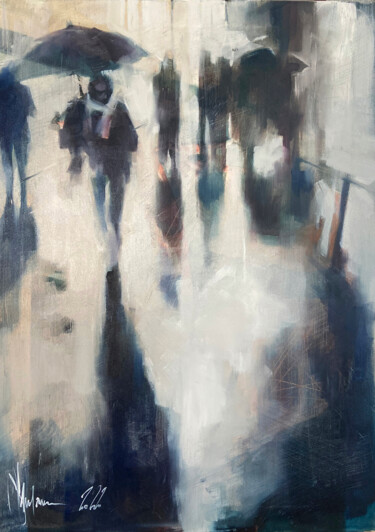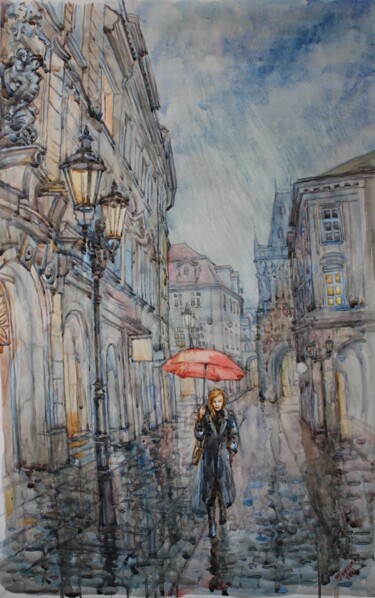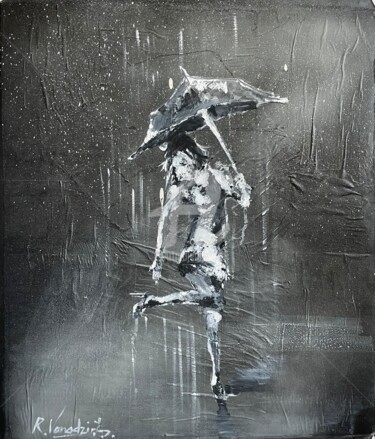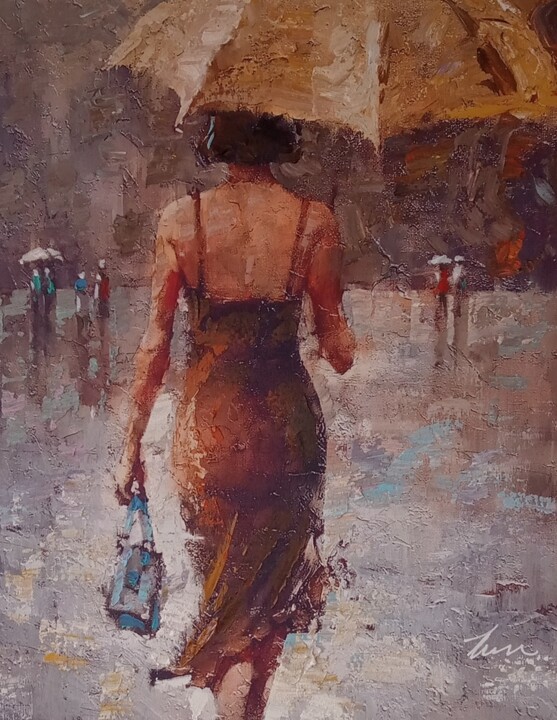 Filip Petrovic, Woman walking in the rain, 2021. Oil on canvas, 53 x 41 cm.
Filip Petrovic, Woman walking in the rain, 2021. Oil on canvas, 53 x 41 cm.
As the color varies
of the seasons,
so do the moods and thoughts of men.
Everything in the world is changeable time.
And behold, it is already pale,
sepulchral autumn,
when yet yesterday reigned
The lush almost eternal summer.
Vincenzo Cardarelli
The "poetry" of the autumn season
The sweetness, introspection and nostalgia of the poetry of Vincenzo Cardarelli, an Italian poet, writer and journalist born in 1887, seems to fully reflect the peculiarities and messages behind the arrival of the autumn season, a fascinating, somewhat more solitary and profound period in which nature, which is tinged with warm colors and lets the leaves fall from the branches, invites people to act accordingly, that is, to change, to start by starting from scratch, forgetting about the past, or if that is not possible, making it less burdensome. In a nutshell, autumn seems to allude to Heraclitus' well-known maxim "The only constant is change," reminding us that the solution to many problems lies in the simplest acceptance of evolution, as well as in the ability to live fully in the present, adapting to the new situations that arise there. In addition, corroborating what has just been stated is the very essence of the astronomical phenomenon of the autumnal equinox, in which, during the first day of the season, day and night are of equal length, bringing about the end of a reproductive cycle of nature.
 Gaetano Ligrani, Autumn at home, 2020. Acrylic on canvas, 63 x 83 cm.
Gaetano Ligrani, Autumn at home, 2020. Acrylic on canvas, 63 x 83 cm.
 Bakhtiyar Urakov, Autumn melody, 2018. Oil si canvas, 75.5 x 76.5 cm.
Bakhtiyar Urakov, Autumn melody, 2018. Oil si canvas, 75.5 x 76.5 cm.
The peculiarities of autumn in art
The main, as well as the most classic and celebrated peculiarities of autumn, which have become symbols par excellence of the season are: the falling leaves, the strong concentration in nature of brown and reddish colors, the abundant rains, and the typical fruit of the season. All these distinctive elements have been immortalized, in some cases even making explicit reference to the autumnal period, by the greatest painters of all time, who have been well able to render the melancholy poetics of the season, resulting in some of the most unforgettable masterpieces in the history of art, such as, for example, Autumn Leaves (1856) by John Everett Millais, The Forest in Autumn (1841) by Gustave Courbet, Sudden Shower over Shin-Ōhashi bridge and Atake (1857) by Utagawa Hiroshige and Autumn (1573) by Giuseppe Arcimboldo. Regarding the first painting, the work by the Pre-Raphaelite master, John Everett Millais, captures the features of four young teenage girls, who, at the end of an autumn day, do their best to gather dry leaves to pile them up in order to light a fire. Autumn Leaves also pursues the intent of revealing to us something about the artist's life, as the girls in bourgeois attire, placed on the left of the support, are Alice and Sophy Gray, that is, the younger sisters of the artist's wife, Effie Gray. It is worth highlighting how Alice, and especially Sophy, were the protagonists of other masterpieces by the painter, in which the main intent was to depict realistically the transience, and thus the fleetingness, of the beauty of youth. By pursuing this aim, moreover, it is also possible to highlight a relevant parallelism, found between what is the succession of the seasons of nature and the succession of the phases of human life. Speaking of The Forest in Autumn, on the other hand, the realism of this Courbet masterpiece seems to invite us to travel with our imagination, allowing us to imagine those particular sensations, which are linked to a quiet autumn walk in the woods. This accurate and detail-filled painting gives voice to the landscape Courbet, often overshadowed by the more provocative and popular one. Probably, the choice of such a subject was determined by the great passion nurtured by the artist for long walks, in particular, those that took place in his beloved homeland, Franca County.
 Gustave Courbet,The Forest in Autumn, 1841. Oil on canvas, private collection.
Gustave Courbet,The Forest in Autumn, 1841. Oil on canvas, private collection.
 John Everett Millais, Autumn leaves, 1856. Oil on canvas. Manchester: Manchester Art Gallery.
John Everett Millais, Autumn leaves, 1856. Oil on canvas. Manchester: Manchester Art Gallery.
As for the rain, however, well exemplifying the violence of autumn rainfall is Utagawa Hiroshige's ukiyo-e, a print in which rain, rendered through sharp, oblique lines, descends from black clouds made by means of bokashi, a special Japanese printing technique on wood blocks, which allows for a variation of brightness and darkness of a single color, or several colors, by hand applying a gradation of ink to a dampened wooden printing block. Returning to the description of the print, the asymmetrical framing of the latter is most likely derived from a fundamental Japanese aesthetic principle, which, reported by Okakura Kakuzō in The Book of Tea, considers asymmetry to be more productive, since, being "incomplete" and "imperfect," it requires a greater interpretive effort on the part of the viewer, aimed at encouraging the use and development of the imagination. Finally, the work that with greater creative flair celebrated autumn fruit is surely Arcimboldo's Autumn, a painting depicting a rude male face in profile, whose distinctive features were realized through a skillful assemblage of vegetables. Precisely in that context, it is worth highlighting how, behind a burlesque veneer, the work actually requires extraordinary execution skills, as only a skilled connoisseur of human anatomy is able to use the forms of nature to construct a portrait. As for the autumn context, in the face of the protagonist of the masterpiece we can well distinguish some fruits of the melancholic season, such as: a pomegranate, a chestnut, a pear, an apple, a fig, grapes and a pumpkin.
 Thomas Steyer, Autumn, 2015. Painting, acrylic on canvas, 90 x 70 cm.
Thomas Steyer, Autumn, 2015. Painting, acrylic on canvas, 90 x 70 cm.
 Mino, Autumne, 2018. Collage on paper, 30 x 30 cm.
Mino, Autumne, 2018. Collage on paper, 30 x 30 cm.
Autumn in the works of Artmajeur's artists
The love nurtured by art history's greatest masters for the autumn season continues in other masterpieces, such as, for example, Autumn Landscape (1850) by Théodore Rousseau, Autumn Leaves (1870) by Ellen Robbins, Banks of the Seine near Bougival (1873) by Alfred Sisley, Autumn Effect at Argenteuil (1873) by Claude Monet, Avenue of Poplars in Autumn (1884) by Vincent van Gogh, and many more. Such an important tradition of landscape subject matter continues to hold its own within contemporary art as well, just as evidenced by Artmajeur's rich collection of themed works by artists, which can be "summarized" by the survey of Vladimir Volosov, Natalie Levkovska, and Vasiliki Siampi.
 Vladimir Volosov, Golden autumn, 2012. Oil on canvas, 61 x 76 cm.
Vladimir Volosov, Golden autumn, 2012. Oil on canvas, 61 x 76 cm.
Vladimir Volosov: Golden autumn
Volosov's autumn painting represents the original meeting of two opposing artistic tendencies: "realism," with which the boats and aquatic reflections were made, and "impressionism," aimed at giving shape to those touches of color, which, juxtaposed with each other, has given life to the trees, the earth and that somewhat "sketchy" sky. In fact, precisely through such personal style of painting, the more realistic desire to realize situations, places or people while remaining faithful to the real fact, annexes within it the more romantic, sentimental and personal point of view of the artist, personified by explicit references to Impressionism. Speaking of autumn, however, Volosov's landscape colors and reflections call to mind a great masterpiece aimed at analyzing the peculiarities of the aforementioned season, namely Claude Monet's aforementioned Autumn Effect at Argenteuil (1873), a luminous painting in which the French master used, just like Volosov, different color textures and consistencies, which tend to be especially mellow in the trees and reflections present on the surface of the Seine River.
Natalie Levkovska, Still life with pumpkin, 2020. Drawing, gouache / graphite / pencil on paper, 71 x 52 cm.
Natalie Levkovska: Still life with pumpkin
In Levkovska's graphite pencil and gouache drawing, depicting a still life, a large pumpkin, the protagonist fruit of autumn par excellence, certainly also thanks to the contribution of the Halloween holiday, is arranged in the foreground of the work resting on a decorative white ceramic plate, a placement that allows it to immediately impose itself in the viewer's field of vision. In fact, only later is it possible to add to the aforementioned view, the image of the large glass vase containing parsley, followed by the presence of the smaller persimmons and the detail of the knife. This "narrative mode" is akin to that which animates a great masterpiece of art history, namely Still Life with Pumpkins and Cucumbers (1734) by Štefan Michal-Vörös Izbighy, in which the three large pumpkins turn out to be, without a shadow of a doubt, the first to receive the viewer's attention. In addition, however, Štefan Michal-Vörös Izbighy's painting also ascribes multiple symbolic meanings to the fruit, as the three gourds allude to wealth, prosperity, and God's mercy, within a narrative that, with the interpretation of all its elements, goes so far as to denounce the social and ecclesiastical relations of the Kingdom of Hungary at the time.
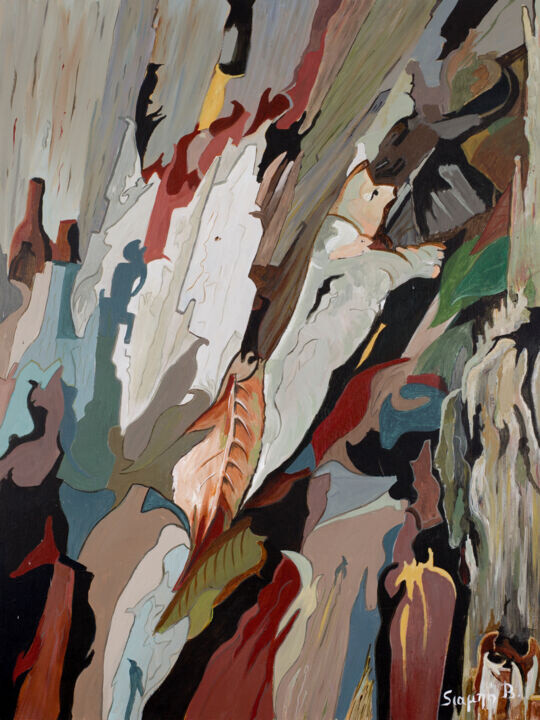 Vasiliki Siampi, Efkalyptos 3, Autumn leaves, 2021. Acrylic on canvas, 80 x 60 cm.
Vasiliki Siampi, Efkalyptos 3, Autumn leaves, 2021. Acrylic on canvas, 80 x 60 cm.
Vasiliki Siampi: Efkalyptos 3, Autumn leaves
Just as anticipated, other undisputed protagonists of the autumn season are the falling leaves, also celebrated by Italian poet Giuseppe Ungaretti's iconic and incisive poem entitled Soldiers. Indeed, "We are as in autumn on branches the leaves," uses one of the symbols of autumn par excellence in order to allude to the precariousness of human life, largely manifested during the dramas of World War I. Siampi's painting finds its place in this meaning-laden context, made with an opposite intent to Ungaretti's, , in that through the depiction of the leaves of the eucalyptus, a tree famous for its particular process of trunk regeneration, the artist wanted to symbolize the hope of being able to be reborn each time, despite the difficulties and impermanence of our existence. In terms of art history, however, noteworthy is the figurative investigation of Ellen Robbins, an American botanical illustrator, who produced, in 1868, a printed book aimed at presenting eighteen color plates of painted tree leaves, having the purpose of celebrating the vibrant nature of New England.



 Olimpia Gaia Martinelli
Olimpia Gaia Martinelli
